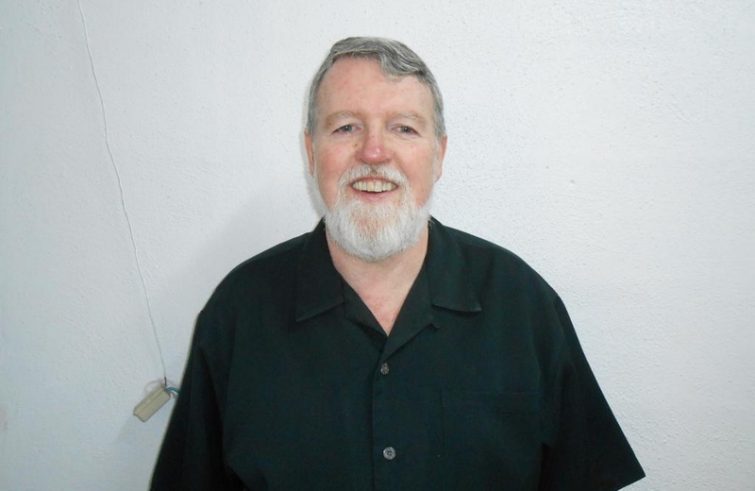
Acting as “gendarmes” in place of their distinguished US neighbours. Or rather, “doing the dirty work”, in exchange for aids, on behalf of their “gringos” cousins. This appears to be the Mexican Government’s new migrant management strategy. The new course began during the Trump Administration and was consolidated in the first few months of the Biden Administration. At the cost of ” exploding” and crushing human rights. Especially the rights of people who have been granted refugee status.
The impact of this measure is evident on the southern border, especially in Tapachula, the first town across the border, in Chiapas, where in the absence of a “physical” wall, the Army and the National Guard established a no less impressive wall.
The aim is not to let anyone through.
Most of all, the goal is to prevent migrant caravans from continuing their journey to the USA. As a result, Tapachula is facing chaos. Alongside the constant influx of people from Central America, the number of Haitians entering the country has soared, forming a “continental snake” that starts in South America, reaches its first “bottleneck” between Colombia and Panama, and then comes to an abrupt halt in Mexico.
The situation is no better at the northern border, where Central American and Haitian migrants, who nonetheless are arriving in small numbers, join the “deportees” from the USA and the internal ‘desplazados’, the Mexican populations fleeing violence.
Migrants stuck in Tapachula. Father Julio López, Executive Secretary for Human Mobility at the Mexican Episcopal Conference (CEM), voiced grave concern in his remarks to SIR:
“The general situation in Tapachula is dramatic. The military won’t even let refugees through, while their status entitles them to move freely in the country”.
 This serious situation has been, inter alia, the object of a letter sent a few days ago by the continental network CLAMOR, the Latin American ecclesial body dealing with migration, to Mexican President Manuel López Obrador. Msgr. Jaime Calderón, bishop of Tapachula, condemned what he called “a veritable manhunt, terrorising migrants, ambushed and dispersed with excessive violence.”
This serious situation has been, inter alia, the object of a letter sent a few days ago by the continental network CLAMOR, the Latin American ecclesial body dealing with migration, to Mexican President Manuel López Obrador. Msgr. Jaime Calderón, bishop of Tapachula, condemned what he called “a veritable manhunt, terrorising migrants, ambushed and dispersed with excessive violence.”
Father López said that the method used to stop migrants often violates human rights, with a disproportionate use of force.
He stressed a further legal aspect. “The Mexican Commission for Refugee Assistance (COMAR) is on the verge of collapse. People applying for refugee status often wait as long as six or eight months, while the legal deadline is 45 days. Circumstances vary according to countries of origin. Many Haitians have arrived via Brazil or Chile, they have the citizenship of those countries, and so do children. The Mexican Church is activating all its channels to obtain temporary legal status, similar to the case of Venezuelans in Colombia.”
The diocese of Tapachula has also involved local parishes in an ongoing effort to welcome immigrants.
Complex situation in the north. The Executive Secretary for Human Mobility also denounced the situation in the northern part of the country, on the border with the USA: “Major challenges are arising here too. At least here the migrants are allowed to move, but there is stronger pressure from organised crime. People working with migrants are confronted with four different types of people: transiting migrants trying to cross the US border; Mexican deportees from the States; deportees of other nationalities, those subjected to “Title 42′; and internally displaced persons as a result of conflicts and violence”.
This scenario is confirmed by people based in the border city par excellence, Tijuana. Fr Patrick Murphy, a Scalabrinian missionary, director of Migrant House (Casa del Migrante), said:
“This has been a growing problem for the last few months; we have two thousand people living in encampments who can’t go anywhere”.
 In fact, alongside deportees and Central American and Haitian migrants, there are increasing numbers of Mexicans fleeing violence. The local population, especially in the southern part of the country, is reacting badly to foreigners and Haitians, people seeking a way out of a difficult situation”.
In fact, alongside deportees and Central American and Haitian migrants, there are increasing numbers of Mexicans fleeing violence. The local population, especially in the southern part of the country, is reacting badly to foreigners and Haitians, people seeking a way out of a difficult situation”.
The existing ecclesial reception facilities are doing what they can, “but we can only accept a small number of people because of the Covid pandemic”.
According to Father Murphy, the Mexican government is the main culprit, since “it fails to provide us with any kind of support, and one wonders how the migratory phenomenon can be controlled by those who are unable to control urban crime.”
Once again, “we are facing an emergency,” said Father Agustín Novoa Leyva, director of the Tijuana Salesian Project. “We are seeing an increasing number of migrants here in the city, including Haitians and many people deported from the United States, asylum seekers who are being expelled under the so-called ‘Title 42’. Our ecclesial bodies and religious congregations are doing what they can. For example, our Salesian community used to take in only men, but now we are starting to welcome families, women with children, many of whom are very young”.
Fortunately, “here in Tijuana, more people are being vaccinated against Covid compared to the central and southern parts of the country, and the infection rate is currently under control.” Nevertheless, Father Murphy pointed out, “vaccines are still in short supply compared to the United States, a few kilometres further north.
 The plight of Title 42 deportations. At any rate, amidst extremely disparate and complex issues, relations with the United States are perceived as a priority in the north.
The plight of Title 42 deportations. At any rate, amidst extremely disparate and complex issues, relations with the United States are perceived as a priority in the north.
In fact, while it previously was a transit country, Mexico is turning into a destination country in both directions:
migrant caravans continue arriving from the South, as mentioned earlier, comprising mostly Central Americans and Haitians. From the North, asylum seekers who managed to enter the United States are being “returned to sender.” The rationale is the aforementioned Title 42 measure adopted by the Trump administration at the start of the pandemic, which allows the US to quickly expel migrants for reasons of public health.
“Biden and Trump’s speeches are different,” said Father Novoa, “but their behaviour is the same. Actually, under Biden, expulsions have increased. This also happened during the Obama Administration.”
For Father Julio López this can be explained by the “increased number of entries and the consequent increase in expulsions.” However, Title 42 is a big problem, also because non-Mexican migrants sent back to our country are extremely vulnerable, lacking proper legal status.
(*) journalist, “La vita del popolo”













